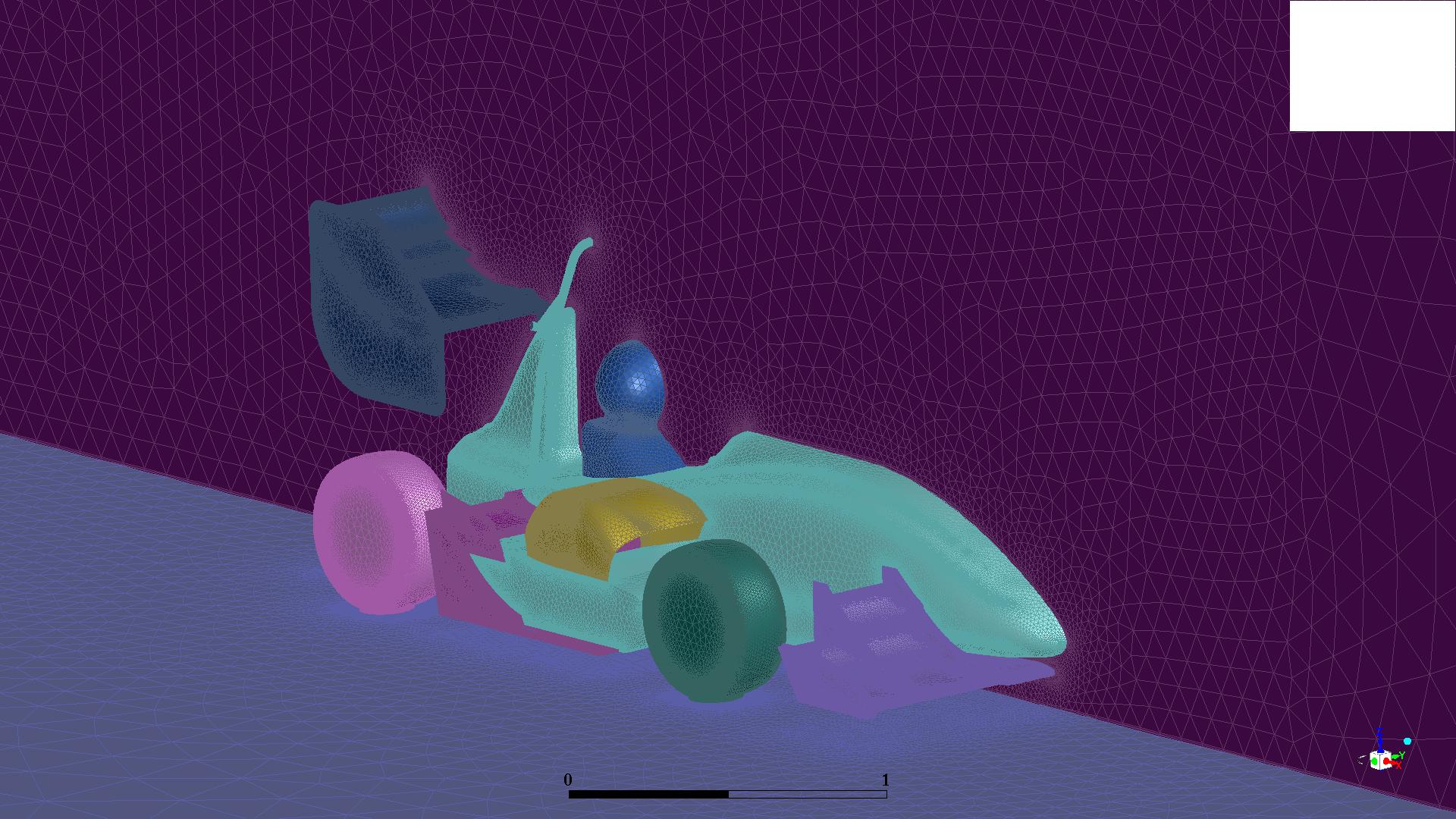-
-
August 4, 2018 at 8:23 am
Horsepower
SubscriberHello,
for my Bachelor thesis I want to model a radiator from a fromula student race car in FLUENT. I've allready implemented the radiator as a porous region and defined the viscous resistance coefficient (1/alpha) and the intertial resistance coefficient (C_2).
The flow field is showing good results in terms of the pressure drop and the velocity through the radiator seems to be modeled correctly. My problem is, that the force on the radiator is still calculated as to be zero. What do I have to do that FLUENT can calculate the force witch is operating on the radiator?
In advance, many thanks for the support.
Lukas
-
August 5, 2018 at 1:03 pm
Karthik Remella
AdministratorHello,
Could you please post some screenshots of your geometry, specifically highlights where are you trying to calculate the forces? Could you also show how you are doing this?
Please refer to sections 32.5 ('Forces on Boundaries' in the Fluent Users Guide) and section 23.2 (in Fluent theory guide) for further details on how Fluent handles Force calculations.
I hope this helps.
Thank you.
Best Regards,
Karthik
-
August 6, 2018 at 7:26 am
Horsepower
SubscriberHello Karthik,
thank you for responding! I've tried calculating forces, like it is described in 32.5. The problem is, that the radiator is modelled as a porous region. Because of that, FLUENT doesn't count this as a wall and I can't calculate forces on it.
As you can see on the pictures, the radiator is underneth the airduct. The radiator is imlemented as a secound cell zone (porous Refion) next to the air. I've connected the two regions with Mesh Interfaces. I can calculate the forces on all other parts, exept the radiator. What do i have to change?
In advance, thanks a lot for your help!
Lukas -
August 6, 2018 at 12:56 pm
Raef.Kobeissi
SubscriberSorry to ask this again, can you please upload the case?
-
August 6, 2018 at 1:09 pm
Horsepower
SubscriberSorry, but i am not sure if I understood you right. Are you talking about the .cas file created from FLUENT?
-
August 6, 2018 at 5:08 pm
Karthik Remella
AdministratorHello,
Yes, please upload your case file from Fluent.
Another thought - have to attempted to perform a volume integral of pressure gradient in the porous media domain and normalize it with your reference values? You can, perhaps, use the 'Custom Field Functions' to do this? This is just an idea. Please let us know what you find.
Thank you.
Best Regards,
Karthik
-
August 13, 2018 at 9:04 am
Horsepower
SubscriberHello,
sorry for not getting back to you in the last couple of days. The .cas File is pretty big (about 1 GB), because of that i will send you a link to a cloud where you can download the File (https://1drv.ms/f/s!ApvLHIeKAmRdgasdt8JEw-N4udazfA). Lately i had the idea to calculate the forces on the radiator from the pressure drop through the radiator with F=delta p * area of the radiator. What do you think about that?
Best regards,
Lukas
-
August 13, 2018 at 11:39 am
Karthik Remella
AdministratorHello,
By definition, there are two components of forces - pressure and viscous forces. When Fluent reports these forces, it takes into account both these components and sums them up appropriately. Please have a look at Section 23.2.1 on the Fluent Theory Guide.
When you are using F = delta_P * area of the rad, you might be ignoring the viscous component of force. Now, depending on the nature of simulation, one component can dominate compared to other and it might be alright to ignore it from your analysis. However, I think it is important to know the implications of your analysis. Please double check if this is true for your case.
I hope this helps.
Thank you.
Best Regards,
Karthik -
August 22, 2018 at 3:03 pm
Horsepower
SubscriberHello,
the viscous component is the reason for the pressure drop through the radiator, so i think it might be a reasonable solution. Is there no way, that Fluent can calculate the Force on the porous model by itself? Actually i can't imagine it, because it is a well known tool witch is used for long times. I just think that i'm just were't able to find the correct setting for it. Can someone help me?
Best regards,
Lukas
-
August 23, 2018 at 1:45 am
Karthik Remella
AdministratorHello Lukas,
I'm sorry you are still having trouble with this feature. Unfortunately, it is really hard for us to help you resolve your issue without the knowledge of what your model is really about. Could you please isolate the portion which you are referring to here in this post and show us clearly what boundary conditions you are using? More importantly, what analysis do you wish to conduct with the forces?
Thank you.
Best,
Karthik
-
September 5, 2018 at 6:56 am
Horsepower
SubscriberI found a way to calculate the forces acting on the radiator. It wasn't possible to calculate it with FLUENT directly, but the calculator from CFD Post ist able to define the forces even though it is modeled as a porous medium.
-
September 5, 2018 at 12:17 pm
Karthik Remella
AdministratorHello,
Thank you for posting your reply and I'm glad you are able to move forward.
Could you please elaborate on the exact steps you used to solve the problem? Please make sure you mark your answer as 'Reply'. This will definitely help someone who might be having a similar question as yours.
Good luck.
Thank you!
Best,
Karthik
-
- The topic ‘Forces on Radiator’ is closed to new replies.



-
2979
-
970
-
857
-
750
-
599

© 2025 Copyright ANSYS, Inc. All rights reserved.









